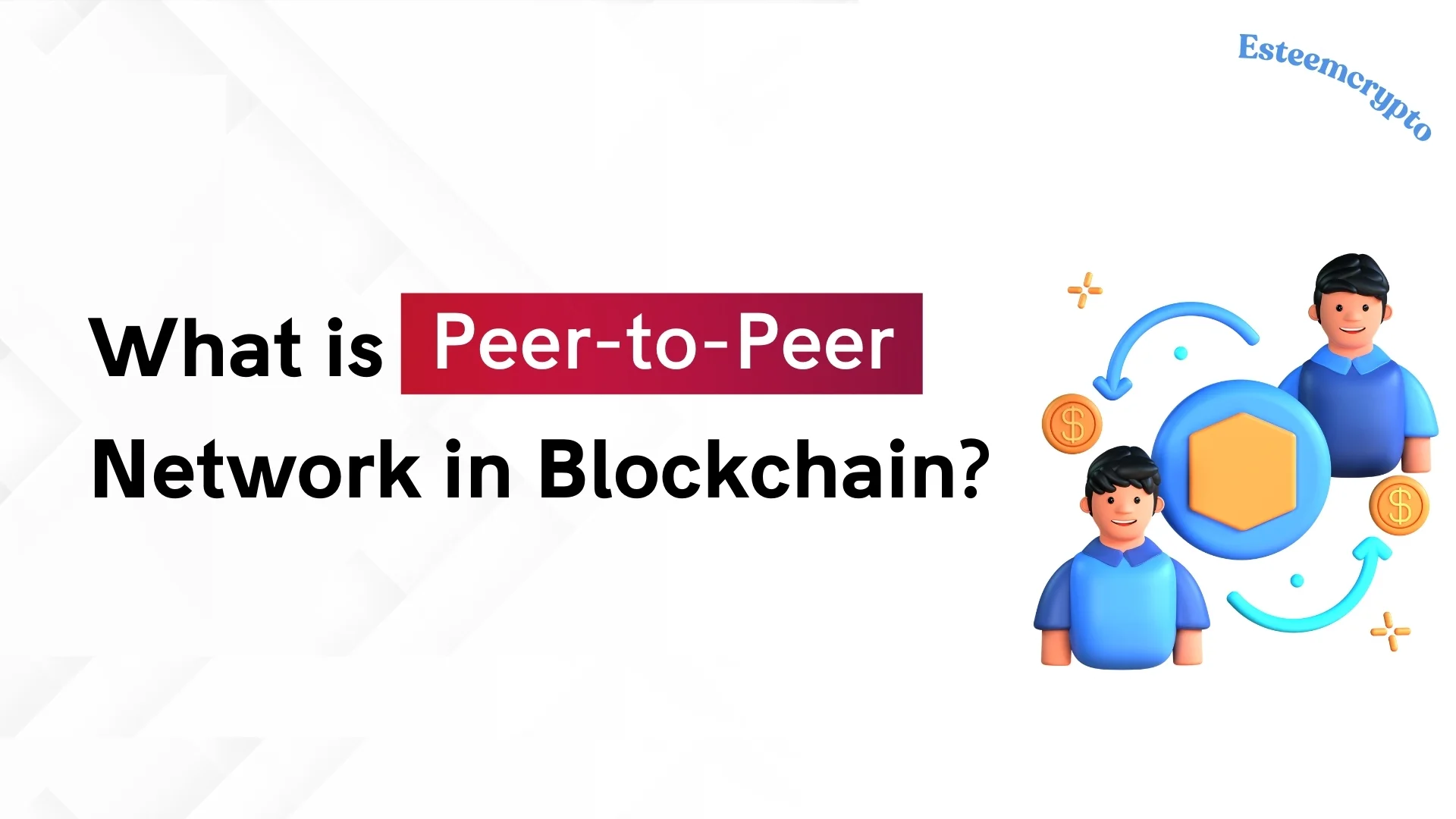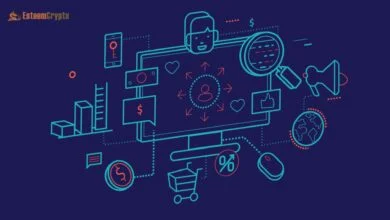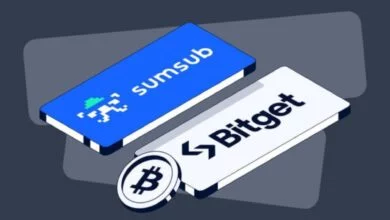Blockchain APIs: A Complete Guide By Esteemcrypto

Blockchain APIs: Developers can communicate with a blockchain network through APIs, which are application programming interfaces. The APIs provide the functions and protocols that users need to query and manipulate blockchain data, including smart contracts, transactions, and other assets on the blockchain.
Developers can access the consensus algorithms used by blockchain networks through APIs to understand better how they reach consensus on transactions and blocks. This knowledge can then be used to test and optimize blockchain applications. Network simulations may also be used to test the compatibility of their applications with different consensus approaches. This might be useful for developers in finding and fixing potential issues before publishing their apps on the blockchain network.
Blockchain application programming interfaces (APIs) are vital because they enable developers to create decentralized applications (DApps) that interact with blockchain networks. Blockchain technology provides developers access to the blockchain’s data and capabilities, enabling them to create apps that can store data, conduct transactions, and carry out smart contracts.
For example, developers can access the Algorand blockchain through the Algorand API, an application programming interface for blockchain technology. In addition to facilitating the development of applications for the Algorand blockchain network, it provides materials and tools to aid developers in creating and deploying decentralized applications (DApps).
How to do Blockchain APIs Work?
Blockchain APIs allow developers to interact with blockchain networks and access their data and functions through a standardized interface. Here are the steps involved in the working of blockchain APIs:
Choose a blockchain network
Developers must select the blockchain network with which they want to communicate. Bitcoin, Hyperledger, and Ethereum are among the examples.
Identify the API endpoint.
When selecting a network, developers need to determine the API endpoint that will be used to communicate with the blockchain network. To access a particular service or function provided by an API, developers might use a URL known as an API endpoint. For example, Infura and Alchemy are only two of the many API endpoints available on the Ethereum network.
Infura and Alchemy provide reliable and extensible API infrastructure for many blockchain networks: Alchemy for Ethereum, IPFS, and Polygon for Ethereum and BNB Smart Chain. Both services offer developers the ability to query blockchain data, interact with smart contracts, and administer transactions.
Authenticate API access
Developers must use the credentials or tokens to authenticate their access to the API endpoint. As a result, the blockchain network can be accessed safely and legally.
Send API requests
Following authentication, developers can use the API endpoint to send API requests to the blockchain network. Sending transactions to the network, requesting information, and carrying out intelligent contracts are all examples of API queries.
Receive API responses
A blockchain network will either confirm the action or provide data in response to an API request. For example, one might query the Bitcoin network for that information to see how much money is in a wallet. Many users worry about their privacy because blockchain data, including their transactions and wallets, is publicly available and can be traced back to them. Encryption and anonymity are two privacy features many blockchain networks have adopted to protect user data better.
Develop better protect user data authentication and authorization constraints, data encryption, and other security procedures to ensure the security and privacy of their consumers’ data.
Analyze and utilize API data
After receiving an API response, developers can examine and use the data according to their needs. For example, developers may get details regarding the smart contract’s current status, like its balance or variable values, in the API response. Developers building DApps can then use the API response to change the program’s state.
Complex apps that use data or resources from outside sources must have this form of API connection. This opens the door for developers to build sophisticated apps with features like personalized user experiences and the ability to react to news events.
Types of Blockchain APIs
Many different kinds of blockchain application programming interfaces (APIs) exist, each tailored to a particular function inside the blockchain ecosystem. The following sections will discuss the most typical kinds of blockchain APIs. Other API options might exist, though, that are specific to the blockchain network and the use case.
Node API
A node application programming interface (API) allows access to a node in a blockchain network. Developers can retrieve data from the node, such as blocks and transactions, and send them to the network. Using node APIs while developing decentralized applications and interacting with the blockchain network is standard practice.
Smart contract API
A “smart contract” is a legally binding agreement whose terms are defined in computer code and which may execute itself. An APIntelligent contract makes accessing intelligent agreements on a blockchain network possible. It enables developers to work with smart contracts, build them, and launch, execute, and interact with them. Decentralized finance (DeFi) applications, which rely on innovative contract capabilities, are often built using smart contract APIs.
Wallet API
Developers can manage Bitcoin transactions with a wallet API that grants access to a blockchain wallet. It lets users see their wallet balances, send and receive cryptocurrency, and view transaction history. Wallet APIs are commonly used to develop applications that accept cryptocurrency payments, such as e-commerce sites.
Market data API
A market data API provides real-time market data for digital assets and cryptocurrencies. You can access market information, including transaction volumes, prices, etc. Market data application programming interfaces are commonly used when developing applications that require real-time market information, including trading platforms.
Identity API
One way to verify users’ identities on a blockchain network is to use the identity API. The ability to manage digital identities and verify users is a crucial feature of many blockchain applications. Online voting systems and applications requiring user authentication and verification often employ identity APIs.
How are DApps Created Using Blockchain APIs?
Developers use blockchain APIs to exploit blockchain technology’s unique qualities, such as transparency, immutability, and decentralization, to construct applications that can function in a trustless environment without intermediaries. Below is an explanation of the procedures for building DApps utilizing blockchain APIs.
Retrieving blockchain data
The primary objective of utilizing a blockchain API is to retrieve data stored on the blockchain. This data may include addresses, blocks, transactions, and more details. To access data from the blockchain API, developers can use HTTP queries with specific parameters and retrieve JSON replies.
JavaScript Object Notation, abbreviated as JSON, is an application-agnostic, lightweight format for data storage. It is easy for computers and PDpeople in F format to read and write since it is built on a subset of JavaScript. Data communication between servers and web apps often uses JSON because it is a text-based format that is easily interpretable by users and other programs.
Parsing and processing data
Data must be parsed and processed before it can be utilized when downloaded from the blockchain. Possible responsibilities include decoding transaction data and verifying digital signatures. Developers can use languages like Python, JavaScript, or Go to examine and process the data, as specified in the blockchain API specification.
Building smart contracts
Now is the time for developers to use blockchain application programming interfaces and languages like Vyper or Solidity to create smart contracts. After the smart contract is built, it may be deployed to the blockchain network via the blockchain API.
This can only be accomplished by creating a transaction that includes the smart contract’s bytecode and any other relevant data. When using programming languages that generate bytecode rather than machine code, it is expected to discuss how bytecode is a low-level representation of code that a virtual machine may execute.
The transaction can only be signed using a private key that maps to a public address on the blockchain network. After the signature is confirmed, the blockchain API can announce the transaction to the network. Before deploying the smart contract on the blockchain, the network will process the transaction to determine whether it is valid. Once it is started, the smart contract can interact with other nodes in the network and execute its code.
Sending transactions
Additionally, blockchain APIs allow for the transmission of transactions to the blockchain network. You can send cryptocurrency, modAt this stage, intelligent contracts, or perform other blockchain-related taske. The blockchain Agrammers use their private keys to sign transactions, which can then be broadcasted to the network and confirmed as successfully executed.
Creating blockchain applications
Finally, blockchain APIs allow developers to create decentralized applications (DApps) that run on the blockchain network. With the help of blockchain APIs, developers can build secure apps that interact with other nodes in the blockchain network, retrieve, process, and store data on the blockchain, and set up smart contracts. This stage is all about putting everything together to make a safe and working DApp.
Revolutionizing Blockchain Development with Decentralized APIs (APIs)
Web application programming interfaces (APIs) provide various services, including asset price data and the ability to execute traditional financial transactions; these services are essential for decentralized applications. The current state of interface solutions relies on intermediaries, which are costly, insecure, and centralized. Decentralized APIs (dAPIs) play a crucial role in thAPIsntext.
To solve these problems, dAPIs deploy decentralized infrastructure. Decentralized application programming interfaces (APIs) use blockchain technology to provide a safe, decentralized method for applications to access data and services independently of a central server. Therefore, compared to conventional APIs, dAPIs are safer, more scalable, and cheaper.
If you’re looking for a decentralized API that leverages a network of nodes to receive data from other sources and feed it into smart contracts, you should look into Chainlink instead of dAPIs. The nodes are motivated to access trustworthy data through financial incentives and reputation rankings.
In contrast, API3 builds, manages, and monetizes dAPIs at scale using Airnode. With Airnode, any web API can be easily connected to any blockchain application; it is both a Web3 middleware and an Oracle solution for the API economy. Connected to the blockchain through middleware, a decentralized API is a set of APIs that mimic real-world business services. Users on the blockchain can access a unified Oracle service that consolidates these APIs. The decentralized governance of the dAPI transparently oversees the resultant service.
So, whereas Chainlink is a decentralized oracle service that brings external data to smart contracts, API3 is about creating decentralized APIs that feed high-quality data straight to decentralized applications (dApps) without intermediaries. With this method, decentralized applications can safely access and integrate real-world data with no chance of data modification or tampering.
How to Choose the Proper Blockchain API
Choosing the proper blockchain API depends on several factors, including the project requirements, the blockchain platform used, and the API provider’s features and pricing. A few considerations when choosing a blockchain API are listed below:
- Blockchain platform: Choose an API appropriate for your chosen blockchain platform. If yFor instance, if are building on Ethereum, fook for an EtheAPI.
- Data retrieval: Consider the types of data the API can retrieve and how to access it. Ensure the API can return the data one requires in an accessible way.
- Security: Search for an API that prioritizes encryption, allows for safe access, and has defenses against hackers and other online risks.
- Scalability: One should confirm that the API can support their project’s size. They should also consider the API’s capacity for requests, response speed, and handling large amounts of data.
- Support and documentation: Choose an API with thorough developer support and documentation. Look for tools, such as tutorials, code samples, and developer communities, that can assist you in resolving problems and making the most of the API.
- Pricing: Consider the API’s pricing plan and how it works with your project budget. While some APIs have set subscription costs or transaction fees, others have free tiers or usage-based pricing.
By considering these factors and evaluating different blockchain API providers, developers can choose the correct API that fits their project requirements and budget.
Benefits of Using Blockchain APIs
Businesses and developers using blockchain technology can reap many benefits from blockchain APIs. For example, developers may easily design apps based on the blockchain because of blockchain application programming interfaces, which simplify dealing with the blockchain. Application programming interfaces (APIs) hide many of the complexities of blockchain technology by providing a standardized and straightforward means of communicating with the blockchain.
Blockchain application programming interfaces can also provide users access to a wealth of data stored on the blockchain. Thanks to this data, new business models, process automation, and trustless transactions are all possible. Applying the data supplied by blockchain APIs can teach businesses a lot about their operations and consumer behavior.
Furthermore, blockchain APIs can help businesses and developers guarantee the safety and authenticity of their apps. The blockchain’s immutability and transparency allow for the construction of secure and resistant construction option systems, protecting against fraud and other destructive behaviors.
Developers and companies can track the most current developments and trends in the blockchain industry with the help of blockchain APIs. Using the expertise of blockchain API providers, businesses may gain access to the latest research and best practices in the sector. This will help them stay competitive and on top of trends.
Challenges of Implementing Blockchain APIs
Despite the numerous benefits, blockchain APIs could be challenging to implement. Blockchain technology’s inherent complexity is a big hurdle since it makes the technology hard to grasp and work with. This can cause development delays and cost overruns. Another issue is that different blockchain networks and APIs do not have standards. Consequently, developers may have to learn and master several APIs to build apps that can talk to different blockchain networks.
Blockchain application programming interfaces can’t run without a solid foundation, which includes a safe database, reliable servers, and fast internet. These limitations can make it harder and costlier to implement blockchain APIs. Another challenge is the regulatory landscape in which blockchain technology operates. The legality of blockchain applications varies substantially among countries and regions, which could cause confusion and slow adoption.
Data security and privacy are essential concerns when using blockchain APIs. Blockchain technology’s decentralized and transparent nature raises concerns about the disclosure or compromise of disclosing. Decompromisingld take special precautions to secure data transmission and storage, ensuring that only authorized parties may access it.
Future of Blockchain APIs
More companies and developers are seeing the value in blockchain technology, which bodes well for the future of blockchain application programming interfaces (APIs). The demand for application programming interfaces (APIs) to support new use cases will increase with the proliferation of blockchain technology.
An area that might be expanded upon is the integration of blockchain APIs with other state-of-the-art technologies like IoT and AI. By integrating blockchain and IoT/AI, developers may create safe and reliable apps that leverage the advantages of both systems.
Another area of development is the creation of protocols for cross-chain interoperability. These protocols will allow different blockchains to communicate with each other. They are encouraging more cooperation and creativity across different blockchain platforms we developers and businesses with new opportunities.
Band Pro is an infrastructure that unifies various blockchain networks by connecting intelligent contracts with real-world data and APIs. ChainAPI’s integration platform also allows API vendors to integrate blockchain technology into their APIs. With these improvements, the blockchain and API ecosystems are entering a new, exciting, and revolutionary era. Blockchain protocol development and implementation may become more standard as blockchain APIs become more popular. Businesses will have easier access to blockchain technology, and platforms will operate better together.
Last but not least, privacy and security will likely take the front stage in the evolution of blockchain APIs. As the frequency and sophistication of data breaches and assaults continue to rise, blockchain APIs must include robust security capabilities to protect sensitive data and prevent unauthorized access.







